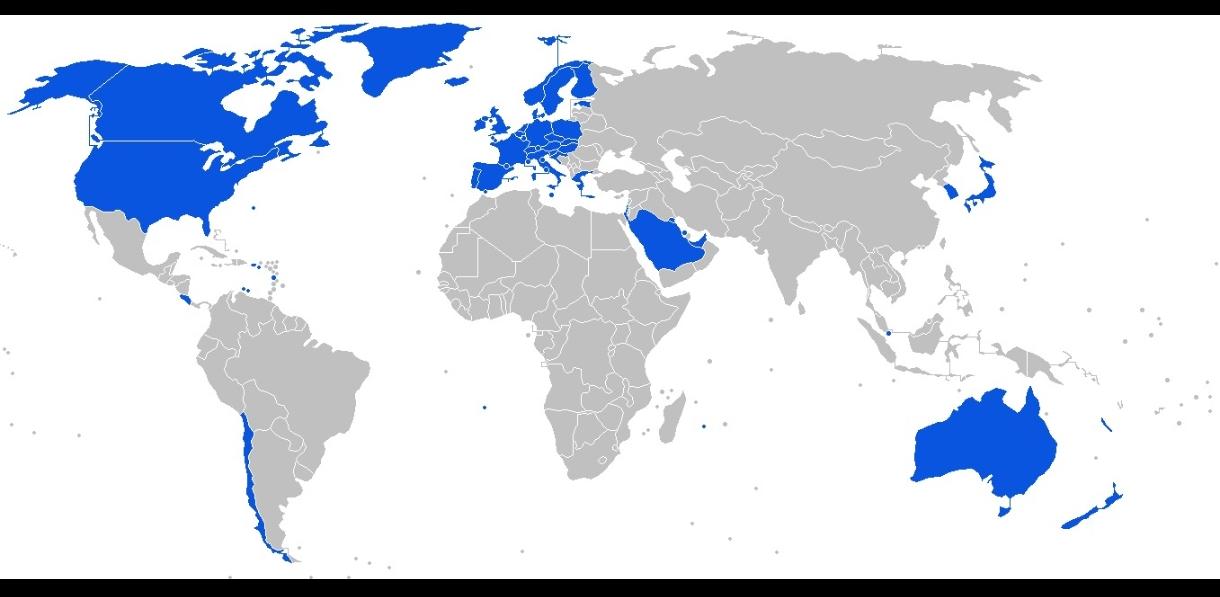Tap Water Safety by Country Map


Alex Cartwright
Senior Cartographer & GIS Specialist
Alex Cartwright is a renowned cartographer and geographic information systems specialist with over 15 years of experience in spatial analysis and data...
Geographic Analysis
What This Map Shows
The "Tap Water Safety by Country Map" vividly illustrates which countries around the world have potable tap water, indicating areas where residents and travelers can safely drink from the faucet without concern. From the pristine waters of northern Europe to the more cautious taps in certain developing regions, this map serves as a vital resource for anyone interested in global water safety. With access to clean drinking water being a fundamental human right, understanding where tap water is considered safe is crucial for health, travel, and environmental awareness.
Deep Dive into Tap Water Quality
Have you ever wondered why some countries have safe tap water while others do not? The quality of tap water largely depends on several interconnected factors, including infrastructure, environmental conditions, and governmental regulations. In nations where the water supply is treated and monitored regularly, such as in developed countries, tap water is often safe to drink. For instance, countries like Sweden, Germany, and Canada boast exceptionally high water quality standards, thanks to well-maintained treatment facilities and comprehensive health regulations.
Interestingly, the source of water also plays a significant role in determining its safety. Countries that utilize surface water sources, such as rivers and lakes, must manage pollution and contamination risks more rigorously than those relying on underground aquifers, which are usually less susceptible to external contaminants. For example, Switzerland is renowned for its clean groundwater, leading to some of the best tap water quality in the world.
Moreover, water treatment processes vary significantly across nations. In many developed regions, advanced technologies such as reverse osmosis and ultraviolet sterilization are employed to ensure that drinking water meets strict safety standards. In contrast, many developing countries struggle with aging infrastructure and limited access to such technologies, which can lead to unsafe drinking conditions. This disparity is reflected in the map, with many nations in Africa and parts of Asia highlighted as areas where caution is advised when consuming tap water.
Statistics reveal that nearly 2 billion people globally lack access to safely managed drinking water services, according to the World Health Organization. This staggering figure underscores the importance of understanding where to find safe tap water and the need for continuous improvement in water quality management.
Regional Analysis
Examining the map more closely, we can see distinct patterns in tap water safety across different regions. North America and much of Western Europe are predominantly shaded green, indicating that tap water is safe to drink. For instance, in the United States, the Environmental Protection Agency (EPA) sets rigorous standards for drinking water quality, resulting in safe tap water across most urban and suburban areas.
Conversely, regions like Sub-Saharan Africa often show a stark contrast with many countries marked in red or yellow, indicating unsafe tap water. Countries like Nigeria and Ethiopia face significant challenges due to a combination of pollution, inadequate infrastructure, and a lack of access to clean water sources. Interestingly, some nations, like South Africa, have regions with safe tap water interspersed with those where it is not, highlighting the disparities that can exist even within a single country.
In Asia, the situation varies widely. Japan and South Korea generally enjoy high-quality drinking water, while in countries like India and Pakistan, many areas still struggle with waterborne diseases due to unsafe tap water. This showcases the importance of regional governance and investment in water treatment infrastructure.
Significance and Impact
Understanding where you can safely drink tap water is not only vital for health but also has broader implications for tourism, public health policy, and environmental sustainability. Countries renowned for their safe drinking water often attract tourists who seek out their culinary experiences and local culture without the fear of gastrointestinal illnesses that can arise from contaminated water.
Moreover, the availability of safe tap water is closely linked to economic development. Access to clean water can improve public health outcomes, reduce healthcare costs, and enhance overall quality of life. As nations work towards achieving the United Nations Sustainable Development Goal of clean water and sanitation for all, this map serves as a critical tool in identifying areas that require more attention and resources.
As we look toward the future, it’s essential to keep advocating for improved water safety and quality worldwide. Emerging technologies and sustainable practices in water management can help bridge the gap between countries with safe drinking water and those struggling to provide it. Understanding the dynamics of tap water safety is not just an academic interest but a pressing global issue that affects millions of lives daily.
Visualization Details
- Published
- October 2, 2025
- Views
- 52
Comments
Loading comments...